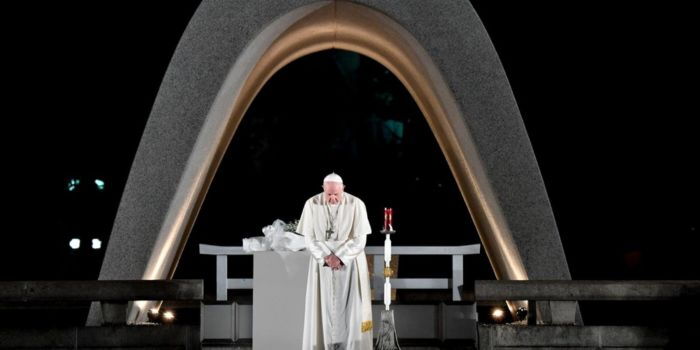As the world mourns the passing of Pope Francis, the 266th leader of the Roman Catholic Church, many people are wondering about the special process that takes place when a pope dies.
Pope Francis passed away at the age of 88 on Easter Monday, after struggling with pneumonia for several weeks.
His death was officially announced by Vatican News, and now, attention has shifted to the sacred and deeply traditional rituals that will follow.
The burial of a pope is not like any ordinary funeral. It follows a time-honored and symbolic process that reflects the pope’s high status in the Church and the spiritual significance of his role.
Confirming the Pope’s Death
One of the first steps after a pope dies is the official confirmation of his death, which is done by the Camerlengo of the Holy Roman Church – currently Cardinal Kevin Farrell.
The Camerlengo approaches the pope and calls out his baptismal name three times.
If there is no response, he solemnly declares, “The pope is truly no more.” This age-old tradition marks the official end of the pope’s earthly life.
Following this, the pope’s official papal ring, known as the Fisherman’s Ring, is removed and destroyed.
This unique ring, created specifically for each pope, is broken to symbolize the end of his authority and to prevent any misuse.
Informing the Church and the World
After the pope’s death is confirmed, the Vatican informs the College of Cardinals and other Catholic Church leaders around the world.
This marks the beginning of a nine-day period of mourning, known as “Novemdiales.” During this time, daily Masses are held in honor of the deceased pope, and the Church reflects on his life and service.
Preparing for the Funeral
The funeral of a pope usually takes place between four and six days after his death, and it is typically held in St. Peter’s Square, located at the Vatican. The exact date and arrangements are decided by the College of Cardinals.
Before the funeral, the pope’s body is carefully washed and then dressed in traditional red and white papal garments.
His body is then placed in a respectful setting for public viewing, often inside St. Peter’s Basilica. During this time, thousands of Catholics and global dignitaries are expected to visit and pay their final respects.
Managing the Church During the Vacancy
While the papal seat is vacant, the College of Cardinals takes charge of the Church’s daily operations. However, their powers are limited to only essential matters. No major decisions or changes can be made until a new pope is elected.
The Funeral Ceremony
The pope’s public funeral Mass is a major spiritual event. It takes place in St. Peter’s Square and is attended by world leaders, cardinals, priests, and faithful from all over the globe.
The Mass serves as a final farewell to the pope, recognizing his life, teachings, and contributions to the Catholic Church.
The Three Coffins Tradition
A pope’s burial follows a unique tradition involving three separate coffins. This triple-coffin method holds deep spiritual and symbolic meaning.
- The First Coffin – Cypress Wood:
The pope’s body is placed in a coffin made of cypress wood, symbolizing humility and simplicity. A white silk veil is placed over his face, and a sealed lead tube is placed inside the coffin. This tube contains a detailed written record of the pope’s life, achievements, and a summary of his papal reign. It may also include coins and medals minted during his time in office. - The Second Coffin – Zinc or Lead:
After the cypress coffin is sealed, it is placed inside a second coffin made of zinc or lead. This inner coffin is airtight and is meant to represent the lasting spiritual legacy of the pope. It preserves the body and signifies the eternal nature of his soul and teachings. - The Third Coffin – Oak Wood:
The zinc or lead coffin is then placed inside a third, outer coffin made of strong oak wood. This final coffin protects the other two and is engraved with a golden cross and the papal coat of arms. This final step ensures the pope’s burial is carried out with the utmost dignity and security.
Final Resting Place
After the funeral and sealing of the coffins, the pope is laid to rest, usually in the Vatican Grottoes beneath St. Peter’s Basilica, alongside many of his predecessors.
The entire process is rich in tradition and reflects the deep respect held for the pope as both a spiritual father and world religious leader.
In summary, the burial of a pope is a sacred and meaningful journey, filled with powerful rituals and centuries-old traditions that honor the pope’s life, faith, and legacy.
Join Our Political Forum official 2025 WhatsApp Channel To Stay Updated On time https://whatsapp.com/channel/0029VaWT5gSGufImU8R0DO30


